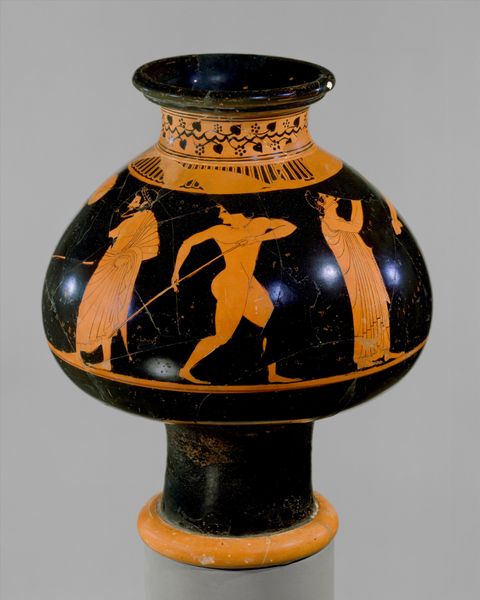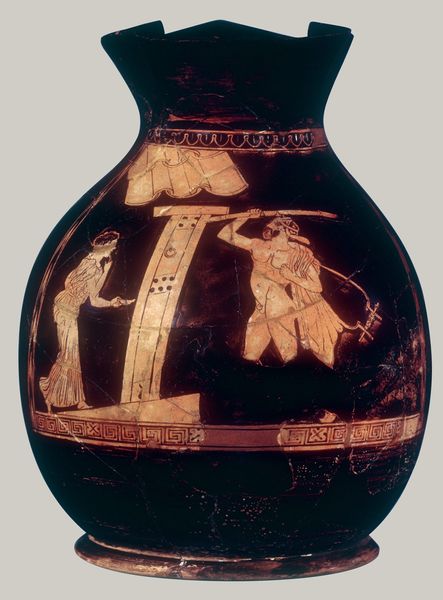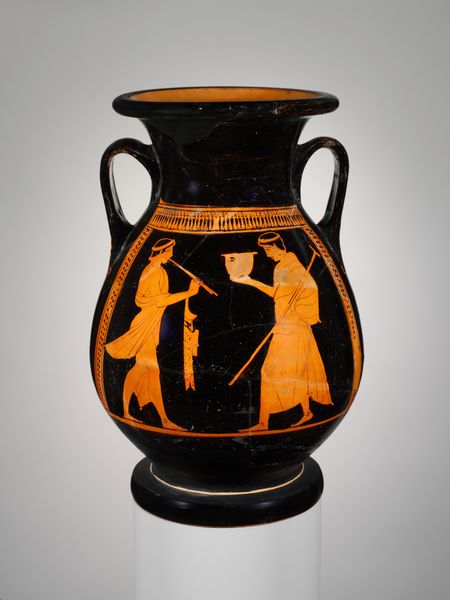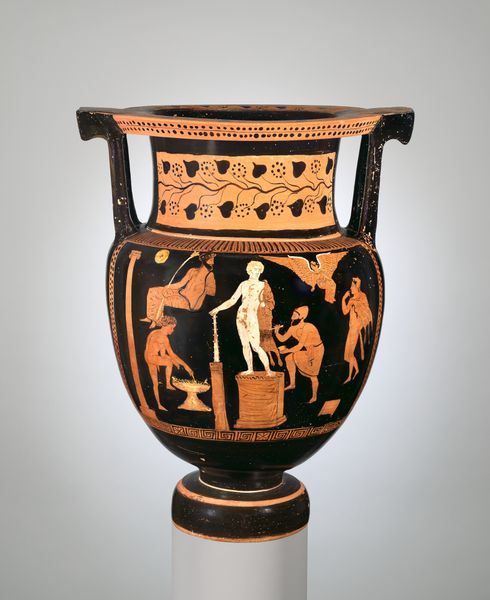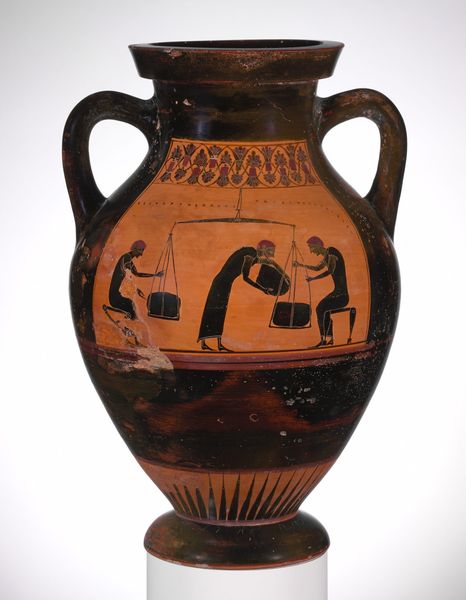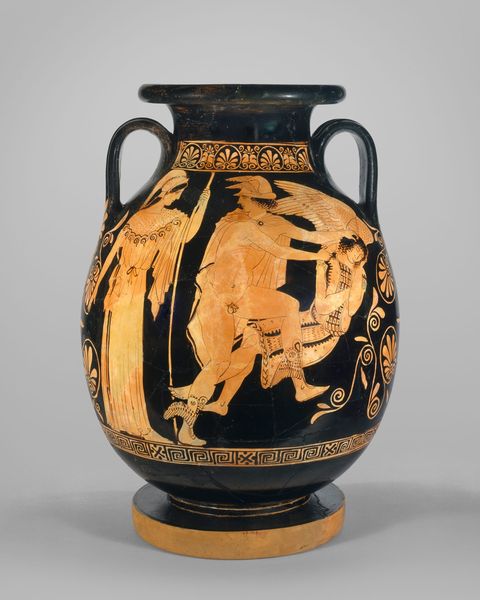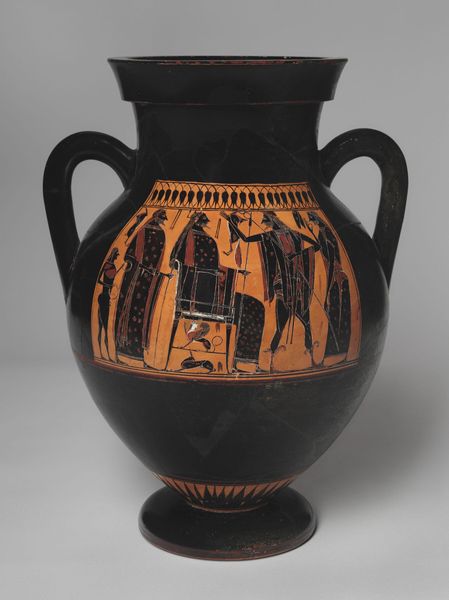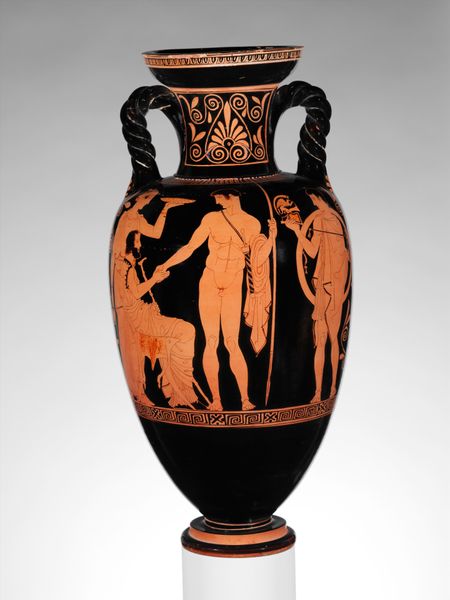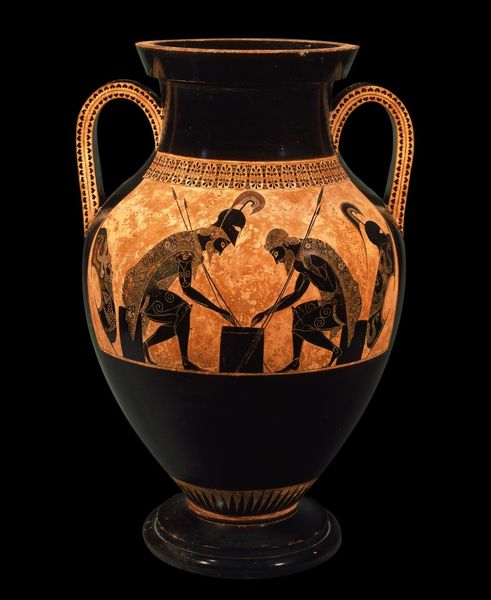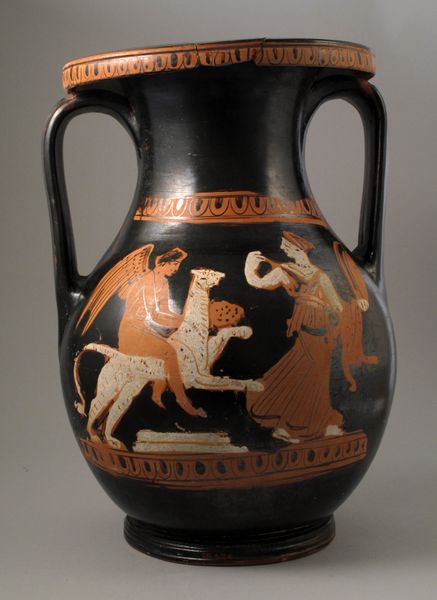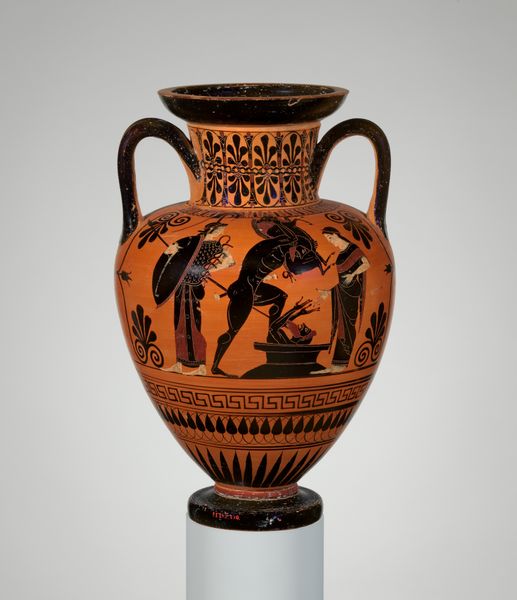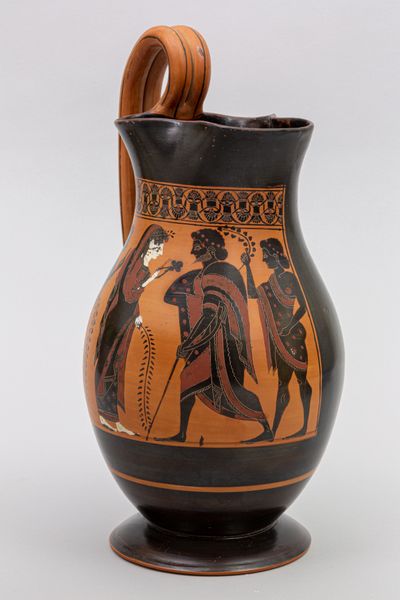
ceramic, sculpture, terracotta
#
narrative-art
#
sculpture
#
greek-and-roman-art
#
ceramic
#
vase
#
figuration
#
ancient-mediterranean
#
sculpture
#
history-painting
#
terracotta
Copyright: Public domain
Curator: This piece is a Terracotta Nolan Neck Amphora, dating back to 460 BC. Editor: My immediate reaction is one of drama. There's a striking tension in the figures depicted, a narrative frozen in time on this beautifully shaped vase. The high-contrast of black and terracotta emphasizes the emotional charge. Curator: Exactly! The stark contrast is typical of the red-figure pottery that was prominent in ancient Greece. In this particular period, we observe an increasing focus on storytelling, using art to visually capture epic moments from mythology and everyday life. What specific aspects of the narrative strike you? Editor: It’s interesting to see the figure with wings intervening, or perhaps urging on, the male figure wielding what looks like a sword or stick. Given what looks like classical Greek attire, is there any connection that can be explored in light of our understanding of patriarchal interpretations of history? Who are these people, and why is this happening? Curator: That is, in part, the appeal of historical narrative. It’s up to us, really, to tease out those understandings, and consider these depictions alongside social realities of their time, but also acknowledge they could simply be interpretations. In any case, this vessel, made of humble terracotta, became an elevated artistic vehicle due to the careful construction of narrative on it, giving this vase a place in social discourse of the time. Its red figure painting in contrast with the sleek black backdrop shows an incredible technical proficiency for its age, making pottery more than functional objects. Editor: Yes, the functional made spectacular through artifice. And that is important, because in the same way, pottery was, like many of the roles women played, undervalued. But there is clearly attention to detail here and such consideration of aesthetic principle, and I want to highlight these considerations. Also, considering its excellent condition and its exhibition at the Metropolitan Museum, it really prompts one to reflect on the political and socio-economic factors that elevate and immortalize particular narratives and aesthetics over others. Curator: Absolutely. This particular amphora speaks to both the universal human experience of conflict and divine intervention and also to the ever present forces that perpetuate biased views on whose stories are to be told. Editor: Indeed, by viewing art through this lens, we enable it to continuously ask necessary, hard-hitting questions.
Comments
No comments
Be the first to comment and join the conversation on the ultimate creative platform.
